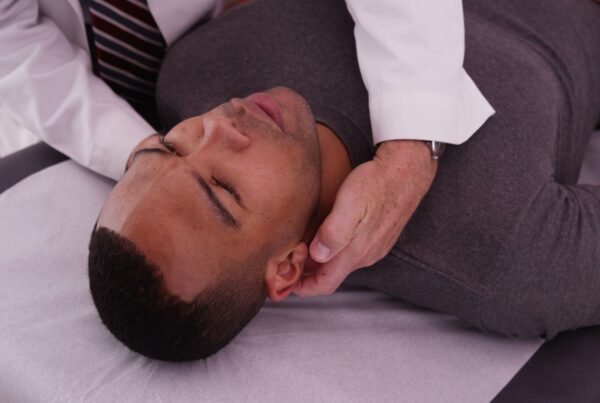Following a concussion it is not uncommon to experience a headache. Here are the various types of headaches that may happen following a concussion. It is important for you and your healthcare provider to determine what type of headache you have, to treat it.
- Migraine Headaches
- This type of headache happens became an area of the brain becomes hypersensitive and can trigger a pain signal that spreads to other parts of your brain
- Features of this type of headache can include
- Dull, throbbing sensation on 1 side of the head
- Nausea/vomiting
- Light/sound sensitivity
- Pain level – moderate/severe
- “Aura” spots/bright lights/halo in vision
- Tension-type Headache
- This type of headache can be associated with muscle tension, muscle spasms and/or stress
- Features of this type of headache include
- Tight squeezing sensation around entire head/sides of head or “goggles” around the eyes
- Pain level – mild/moderate
- Later in the day
- Cervicogenic Headaches
- This type of headache can occur when there has been some induring to the muscles and soft tissues of the neck and back of the head. There are many sensory nerves in the muscles in this area and can refer/travel to the skull and scalp
- Features of this type of headache include
- Usually begins in the neck/shoulders/back of head and sometimes travels over the top of the head
- Neck movement or positioning can make the pain worse.
- No associated nausea and pain from mild-severe
- Rebound Headaches
- Sometimes the very medicines used to treat headaches can actually cause headaches. When pain medicines are taken daily on a regular schedule, missing one or two doses can result in a headache.
- You also can develop a rebound headache if you decrease the amount of caffeine you use. For example, if you normally drink a lot of coffee, tea or energy drinks but don’t get your usual amount, you may get a headache.
Most headaches are not dangerous. In the first few days after a concussion or mTBI (mild traumatic brain injury) a person may experience a headache. A person should seek out a health care professional IF the following occurs:
- Your headache gets worse
- You develop nausea/vomiting with a headache
- You develop arm or leg weakness or problems speaking along with a headache
- You have increased sleepiness with a headache
Whiplash Associated Disorder (WAD)
Whiplash Associated Disorder (WAD) is the official name for patterns of complaints after an accident with an acceleration-deceleration mechanism whereby forces are transferred to the neck and cervical spine. WAD can occur after car accidents, sports injuries and/or falls. Whiplash and concussion may have similar presenting symptoms. Most people with whiplash get better within a few days by following a treatment plan that includes medication and exercise. However, some people may have chronic neck pain and other long lasting complications.
Whiplash and concussion may have similar presenting symptoms, biomechanical mechanics and neurophysiological sequelae, but neither enjoys a gold standard diagnostic test. Guidelines for whiplash and concussion are developed and implemented separately. This disparate process may contribute to misdiagnosis, delay appropriate primary care management, and impair patient outcomes. Below is a chart of concussion symptoms and WAD symptoms.
https://www.vitalheadandspine.com/blog/post-concussion-syndrome-vs-whiplash-associated-disorder
In conclusion it is important for those sustaining a neck/head injury to communicate to your primary care physician to allow for the best possible outcomes which may include physical therapy.
References:
https://elizabethsandelmd.com/2017/06/29/different-types-headaches-concussion-tbi/
https://pubmed.ncbi.nlm.nih.gov/31610758/
https://www.vitalheadandspine.com/blog/post-concussion-syndrome-vs-whiplash-associated-disorder



